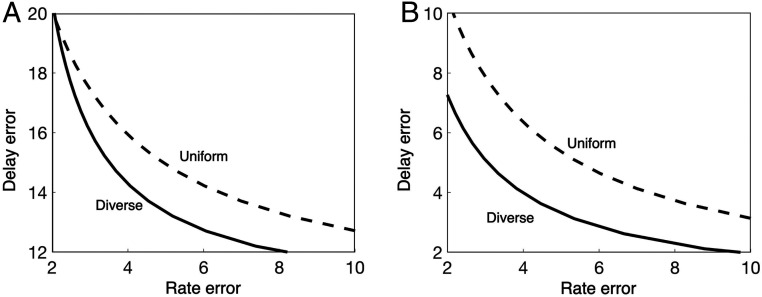Fig. 8.
Diversity in the components (Diverse) improves performance compared with uniform components (Uniform). In the diverse cases, both layers are allowed to use heterogeneous signaling delays and rates. In uniform cases, they are constrained to be homogeneous. The horizontal axis shows the sum of the rate errors in both layers, and the vertical axis shows the sum of the delay errors in both layers. For both the setting of visual object tracking and lateral control in trail tracking, we can observe DESSs (i.e., the diverse cases have less stringent SATs in control than the uniform cases). (A) For visual object tracking, we used the component SAT for the reflex loop and for the planning loop. The component SATs are converted into system SATs by Eq. 6 with parameters , , and . Although the plot is shown for specific levels of net delay and net warning, Fig. 6 suggest that, in the diverse case, the advantageous performance holds over a broad range of net delay/warning as the optimal signaling delay and rate takes a constant value when the net delay and net warning are in and , respectively. (B) For the lateral control in trail tracking, we used the component SAT for the reflex loop and for the visual loop. The component SATs are converted into system SATs by Eq. 6 with parameters , , and . In the diverse case, the reflex layer and the planning layer are allowed to use heterogeneous signaling delays and rates, whereas in the uniform case, they are constrained to be homogeneous.

